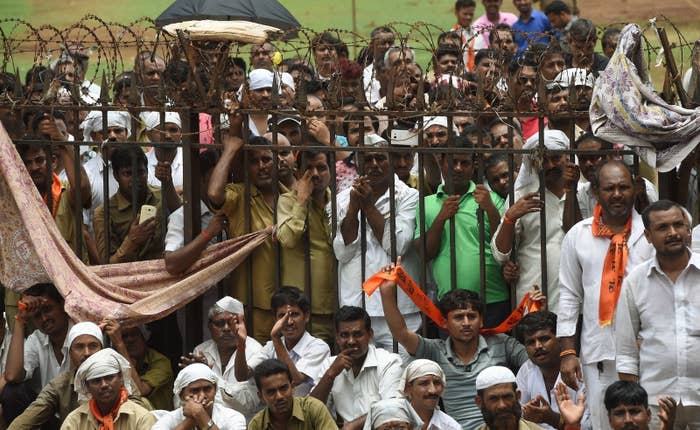
Uber has for the first time publicly addressed concerns surrounding earnings and incentives in India that were raised by thousands of drivers in the country when they went on strike for several weeks last month.
Uber’s India President Amit Jain apologised to both riders and drivers in a company blog post published on Friday, and talked about falling driver earnings and reduced monetary incentives, which were both key issues for those striking.
It's time to set the record straight, my take on driving with Uber in India. Read here: https://t.co/soVpbQs7YZ
Jain wrote that driving for Uber is “at heart an entrepreneurial activity,” unlike working as a private driver with set hours and fixed hourly wages. “Earnings are not one size fits all,” he said.
Uber drivers were joined on the strike action by those working for its Indian rival Ola.
Uber’s post said 80% of drivers across India who are online for more than six hours a day make between Rs. 1,500 and Rs. 2,500 ($22 and $37) after Uber’s service fee, which — according to multiple drivers who spoke with BuzzFeed News — is approximately 25%.
Drivers, however, disputed Uber's figures and said that they were making just about Rs. 1,000 ($15) after driving for more than 12 hours a day — barely enough to pay for gas, let alone for other expenses.
“I don’t know why the Uber India head is writing this on their website,” said a driver who has been driving for the company in New Delhi for over two years and wished to remain anonymous. “I sold my second car because I couldn't afford to pay the monthly loan instalment each month. I’m definitely not earning enough.”
Jain also addressed monetary incentives that drivers received for hitting a certain number of trips each day. In the last few months, Uber has sharply reduced the amount it doles out to drivers who hit these targets — one of the main reasons why they went on strike last month.
“Incentives are dynamic, as is our business model,” wrote Jain. “[They] vary widely by individual drivers.” Jain explained that although Uber uses incentives to compensate drivers for their time in new cities where riders may not be familiar with Uber, the company rolls them back when it sees a “sustained high demand” from both riders and drivers. When this happens, Jain wrote, “we can shift from startup mode to a more sustainable business model … and invest more in drivers and our products for the long term.”
The last point is particularly relevant in the context of questions about the sustainability of Uber’s business model around the world. Although the company’s revenue has continued to grow, Uber lost over $2.2 billion in the first half of 2016, and more than $800 million in the third quarter, according to Bloomberg.
Uber India saw a 60% year-on-year increase in driver sign-ups in January 2017, according to Jain’s post, but drivers told BuzzFeed News that this was, in fact, a problem.
“There are too many Uber cars on the streets and not enough demand,” said Rashid, an Uber driver based in New Delhi who signed with the service in November. “I don’t even get 10 rides a day. It’s just not sustainable for me to drive for Uber.”
